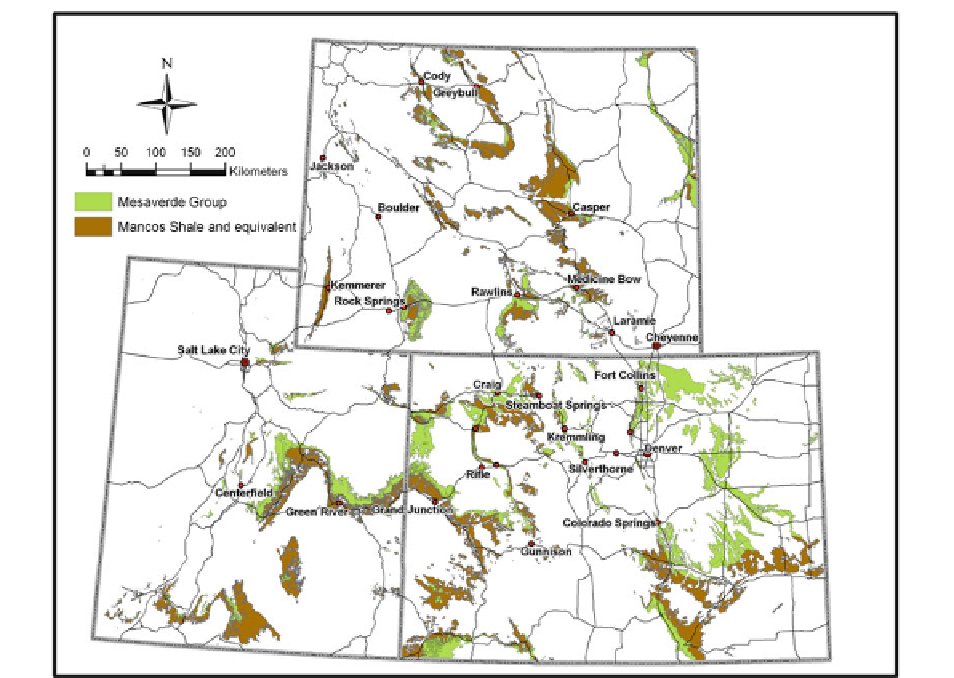Geology Reference
In-Depth Information
Fig. 17.2
Map showing outcrops of Mesaverde Group and associated Mancos Shale (Compiled after Green (
1992
) (Colorado),
Green and Drouillard (
1994
) (Wyoming), and Hintze and others (
2000
) (Utah)). Map was assembled by J. Leva-Lopez.
At the same time, field evidence of storm-wave
conditions is clear and prevalent through much of the
southwestern WIS stratigraphy (Hampson
2010
) , as
predicted by the modeling, though it is important to
note that such conditions applied particularly to the
western, highstand shorelines, rather than the lowstand
ones. The WIS modeling described above was general-
ized for only a single Campanian scenario. The domi-
nant Campanian stratigraphic theme outlined in this
paper was one characterized by a rapidly changing
regressive and transgressive paleogeography, land-
scape and bathymetry. The frequency (few 100 ky) and
extent (repeated cross-shelf shoreline migrations of
100s of kms) of these changes caused the seaway to
change its shape signifi cantly and relatively rapidly.
This involved equally frequent changes in shoreline
morphology from regressive deltas and strandplains to
transgressive estuaries and barrier-lagoon systems. In
addition came basinwide coastline morphology
changes that accompanied the Sevier-Laramide tec-
tonic transition. The scenarios emerging from model-
ing studies account well for basin-scale processes, for
the highstand, storm-wave dominated shorelines, and
for the now well-documented southerly defl ection of
sediment dispersal that appears to be preferential at the
tips of clastic wedges and sub-wedges. However, the
models were less able to reproduce the signifi cant
environmental changes over the short time scales of
the regressive-transgressive cycles, and in particular
the tidal amplifi cation that accompanied the frequently
changing width of the seaway during these cycles, or
that resulting from the changing Sevier-to-Laramide
tectonic setting of the basin.
17.1.5 Study Area and Objectives
Figures
17.2
and
17.3
show the outcropping Campanian
Mesaverde Group in Wyoming, Colorado and Utah, and
the stratigraphy of the successions being considered.

